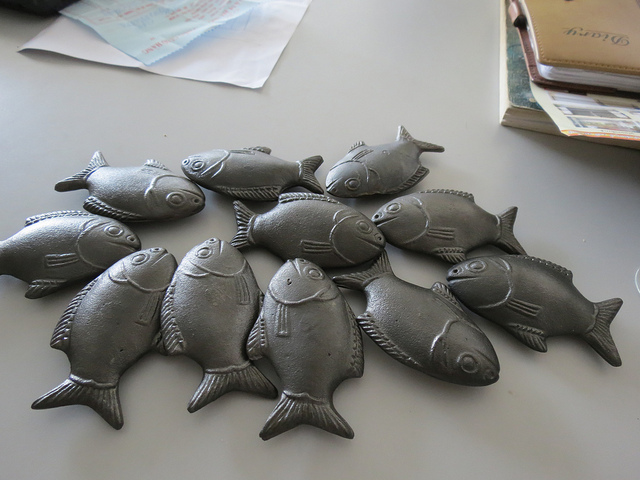TORONTO — In Cambodia, Ontario scientists are doling out ingots to cure iron deficiencies. In Quebec, researchers are tackling food insecurity in Africa by cultivating insect farms, and B.C. doctors are fortifying mothers’ meals in Southeast Asia so they’re better able to take care of their newborn babies.

These are just a handful of the ambitious projects hoping to transform maternal and baby health around the world. And they have Canadian fingerprints all over them.
On Thursday, Grand Challenges Canada poured $12 million into 65 projects, handing 61 ideas seed money and another four successful ventures transition-to-scale funding.
READ MORE: 6 Canadian game-changing ideas for global health care
Grand Challenges Canada is funded by the federal government and its grant program helps pay for research in developing ways to treat diseases in the developing world.
The ideas are far-reaching, with 35 innovators from 13 developing countries from across Asia, Africa and Latin America. Another 26 projects are based out of Canada.
Global News took a look at five made-in-Canada proposals:
Iron fish ingots combat iron deficiencies in Cambodia
While spending four years living in Cambodia, Guelph university student Chris Charles began a project to help locals. In Cambodia, about six in 10 women are anemic because of an iron deficiency in their diets. They end up with premature labour, hemorrhaging during childbirth and their babies struggle with brain development because of malnourishment.
Charles created the Lucky Iron Fish — a 200 gram, three-inch long, cast iron ingot that the women keep in their pots while cooking rice, stew or other broths. Because of the shape and design, the fish leaches out about 75 per cent of the daily-recommended intake of iron. It only costs $5 to buy and lasts for five years for an entire family, according to Tania Framst, the vice-president of the company, Lucky Iron Fish. Iron supplements, on the other hand, cost about $30 per person each year.
Framst said the company’s goal was to dole out 10,000 fish this year. Now, only five months in, it’s supplied more than 11,000 fish to families in Cambodia.
Harvesting insects to tackle global food insecurity

They may not be appetizing, but they’re packed with protein and iron: in Montreal’s McGill University, researchers are developing methods to grow, harvest and process edible insects in hopes of creating a sustainable, viable way to nourish countries in need.
Right now, about 35 per cent of the world relies on insects for nutrition. The thing is, access to this source of food is dependent on the season.
The Montreal researchers’ idea is to develop and distribute insect farming technology to create a cheap and nutritious, safe food that would feed 80 million people who live in the slums in Africa and Latin America. So far, the project has helped high-need regions in Mexico, Ghana and Kenya.
Creating a sauce with all the crucial ingredients
Pick up a breakfast cereal while grocery shopping and you’ll see most of our options are fortified with important vitamins and minerals. That isn’t the case in some parts of Southeast Asia. This is why University of British Columbia researchers are working on including thiamin — better known as B1 — to fish sauce that’s widely used in meals across Cambodia.
Their goal? To tackle beriberi, a disease caused by lack of the crucial vitamin. Low levels of B1 in moms who are breastfeeding causes their kids to develop beriberi, often resulting in heart failure and death. Breast milk is the only source of thiamin babies get in the first six months of their life.
Vitamin supplements are costly and improving on food in this resource-poor region isn’t a feasible option, according to the B.C. scientists. But fish sauce is a traditional South East Asian condiment: it’s cheap, consumed daily and made locally. The Vancouver scientists say they’ve developed a thiamin-fortified fish sauce. And in the long run, they think they could include other key nutrients using the sauce as the vehicle.
Creating easy-to-use, quick testing for pneumonia
In Canada, if your newborn baby is sick, he or she receives a chest x-ray to check for pneumonia and is then whisked off to emergency care. But it isn’t as simple in remote areas, such as Uganda, according to University of Alberta researchers. There, the doctors are working on identifying a blood biomarker to be used in a simple blood test that could replace the chest x-ray for pneumonia diagnosis.
Childhood pneumonia is one of the top three causes of death in kids following the newborn period. Chest x-rays and conventional technology aren’t readily available in parts of the world, such as Uganda, so the doctors hope their biomarker test could be an easily accessible tool in remote communities.
Transforming a common Indian staple into a nutrition powerhouse

In India, locals either don’t eat meat or can’t afford to eat it. As a result, families often deal with iron deficiency — in moms, this malnutrition is passed onto their kids. And iron is critical in early childhood health when kids are growing and developing.
At the University of Saskatchewan, the scientists believe they’ve zeroed in on a way for Canadians to easily help Indian moms. Dal — a stew made of lentils, chickpeas and peas — is a common dish in India, but the ingredients are Canadian products. With their seed money in tow, the researchers plan to treat the seed coating and add more iron to these crops so that once they’re in the hands of Indian families at the consumer level, their food is packed with the nutrients they need.
READ MORE: Why you should eat beans, lentils, and peas to lower bad cholesterol
carmen.chai@globalnews.ca
Follow @Carmen_Chai


Comments